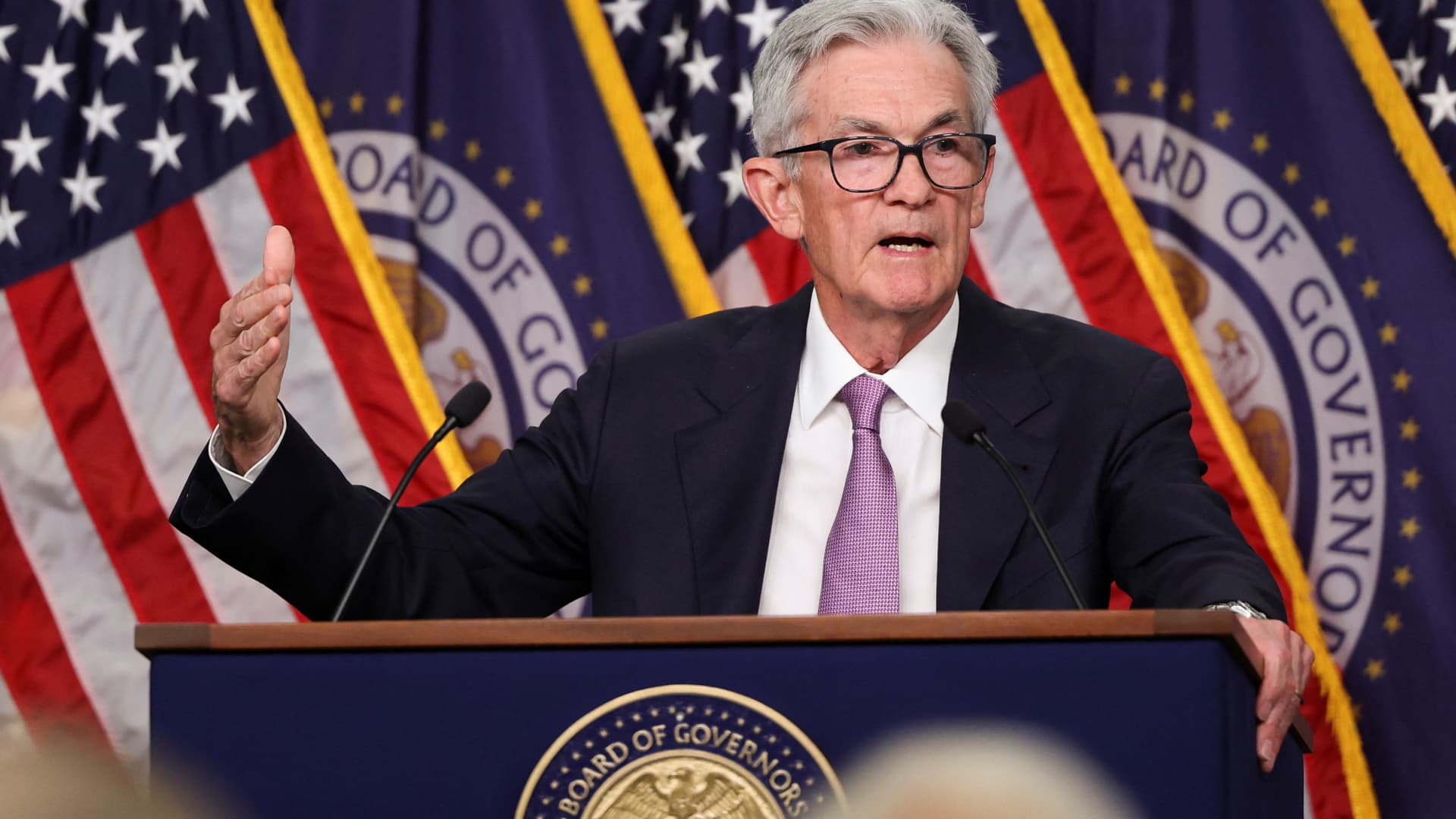[ad_1]
Federal Get Board Chairman Jerome Powell holds an interview adhering to a two-day convention of the Federal Aggressive Market Board on charge of curiosity plan in Washington, UNITED STATE, September 18, 2024. REUTERS/Tom Brenner
Tom Brenner|Reuters
Falling charges of curiosity are usually nice data for monetary establishments, notably when the cuts aren’t a precursor of financial disaster.
That is as a result of decreased costs will definitely scale back the motion of money that is occurred over the earlier 2 years as shoppers moved squander of inspecting accounts and proper into higher-yielding alternate options like CDs and money market funds.
When the Federal Get decreased its benchmark worth by half a portion issue final month, it signified a reworking think about its stewardship of the financial local weather and telegramed its intent to scale back costs by another 2 full % elements, in response to the reserve financial institution’s estimates, rising leads for monetary establishments.
Nonetheless the journey almost definitely is not going to be a easy one: Constant worries over rising value of dwelling can suggest the Fed doesn’t decreased costs so long as anticipated and Wall floor Highway’s estimates for enhancements in internet charge of curiosity income â $ ” the excellence in what a monetary establishment makes by providing money or investing in safeties and what it pays depositors â $ ” may require to be known as again.
” {The marketplace} is leaping round primarily based upon the reality that rising value of dwelling seems to be reaccelerating, and also you ask your self if we will definitely see the Fed day out,” claimed Chris Marinac, analysis examine supervisor at Janney Montgomery Scott, in a gathering. “That is my battle.”
So when JPMorgan Chase begins monetary establishment revenues on Friday, consultants will definitely be on the lookout for any kind of recommendation that supervisors can provide on internet charge of curiosity income within the 4th quarter and previous. The monetary establishment is anticipated to report $4.01 per share in revenues, a 7.4% decline from the year-earlier length.
Acknowledged unknowns
Whereas all monetary establishments are anticipated to finally benefit from the Fed’s relieving cycle, the timing and dimension of that change is unidentified, primarily based upon each the worth environment and the interplay in between precisely how delicate a monetary establishment’s possessions and tasks are to dropping costs.
Ideally, monetary establishments will definitely enjoyment of a length the place financing bills drop quicker than the returns on income-generating possessions, rising their internet charge of curiosity margins.
But in addition for some monetary establishments, their possessions will the truth is reprice down quicker than their down funds within the very early innings of the relieving cycle, which means their margins will definitely take successful within the coming quarters, consultants declare.
For giant monetary establishments, NII will definitely drop by 4% normally within the third quarter as a consequence of lukewarm lending improvement and a lag in down fee repricing, Goldman Sachs monetary consultants led by Richard Ramsden claimed in an Oct. 1 be aware. Down fee bills for giant monetary establishments will definitely nonetheless climb proper into the 4th quarter, the be aware claimed.
Final month, JPMorgan involved financiers when its president said that expectations for NII next year were too high, without giving further details. It’s a warning that other banks may be forced to give, according to analysts.
“Clearly, as rates go lower, you have less pressure on repricing of deposits,” JPMorgan President Daniel Pinto told investors. “But as you know, we are quite asset sensitive.”
There are offsets, however. Lower rates are expected to help the Wall Street operations of big banks because they tend to see greater deal volumes when rates are falling. Morgan Stanley analysts recommend owning Goldman Sachs, Bank of America and Citigroup for that reason, according to a Sept. 30 research note.
Regional optimism
Regional banks, which bore the brunt of the pressure from higher funding costs when rates were climbing, are seen as bigger beneficiaries of falling rates, at least initially.
That’s why Morgan Stanley analysts upgraded their ratings on US Bank and Zions last month, while cutting their recommendation on JPMorgan to neutral from overweight. Â
Bank of America and Wells Fargo have been dialing back expectations for NII throughout this year, according to Portales Partners analyst Charles Peabody. That, in conjunction with the risk of higher-than-expected loan losses next year, could make for a disappointing 2025, he said.
“I’ve been questioning the pace of the ramp up in NII that people have built into their models,” Peabody said. “These are dynamics that are difficult to predict, even if you are the management team.”
[ad_2]
Source link




